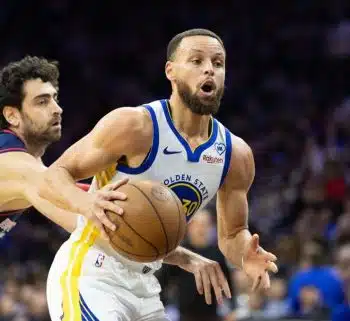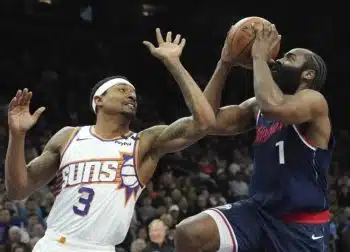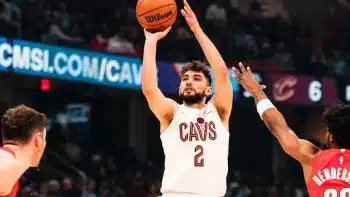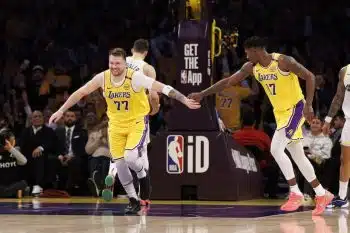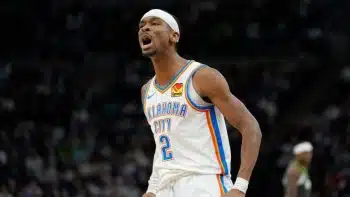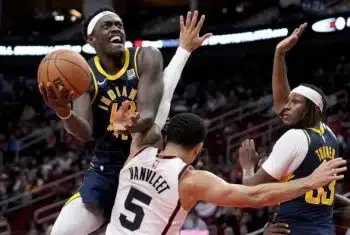NBA
NBA Sunday: Danny Ainge’s Tough Decision
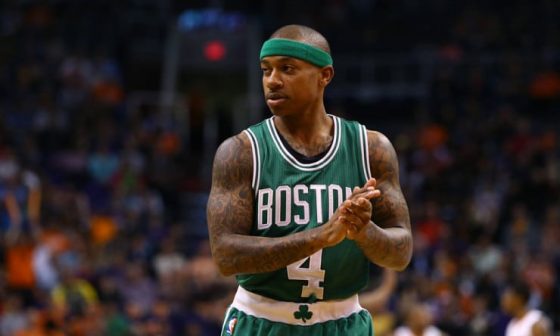
If there’s one thing you’ve gotta credit the Boston Celtics for, it’s this: they always seem to be just one or two pieces away from winning the NBA’s Eastern Conference.
Antoine Walker and Paul Pierce had the team in contention on an almost annual basis, and Kevin Garnett and Ray Allen, for the most part, did the same. Since moving on from Pierce and Garnett a few years ago, the Celtics were supposed to be rebuilding.
Instead, behind Isaiah Thomas and one of the most inspiring postseason performances we have seen in some years, the NBA universe is wondering whether the Celtics have what it would take to shock the world.
It sounds like a good problem to have, but truth is, the unintended consequence of the overachieving Celtics has put both president of basketball operations Danny Ainge and Thomas in an impossible predicament.
By virtue of the Celtics owning the rights to the 2017 pick belonging to the Brooklyn Nets, Ainge has to decide whether to fully commit himself to Thomas as the team’s lynchpin. Before such an inspiring season (and postseason), the prevailing sentiment was that the Celtics would be wise to use what may end up being the first overall pick on either Markelle Fultz or Lonzo Ball.
Today? The decision has become much more difficult.
For Thomas, no matter what happens from here, he will forever be linked to Fultz and Ball. If the Celtics commit to him and trade a pick that could have amounted to either of them, assuming they fulfill their potential, anything less than a championship would be a Scarlett letter that Thomas would wear the rest of the way.
Interestingly enough, the scenario is precisely what transpired with Stu Jackson, Otis Thorpe and Joe Dumars.
For Ainge, one can only hope that the ending is as happy.
* * * * * *
About 20 years ago, the Vancouver Grizzlies were just finishing up their second NBA season. With a combined 29 wins, they seemed to be a clear step behind Canada’s other expansion team—the Toronto Raptors. Out West, however, the Grizzlies had bigger concerns than just their Canadian counterparts.
Across the country in Ontario, the Raptors had lucked into three 20-something-year-olds who each had high hopes for the future: Damon Stoudemire, Marcus Camby and Shawn Respert. The Grizzlies, on the other hand, had the impressive Shareef Abdur-Rahim, as well as Bryant “Big Country” Reeves.
General manager Stu Jackson thought it wise to add a few veterans to his young core, and with it being a poorly kept secret that former NBA Champion Otis Thorpe had fallen out with head coach Doug Collins, Jackson pounced. He agreed to trade a future first round pick to the Detroit Pistons in exchange for Thorpe. This wouldn’t vest until 2003, when it was only protected if it happened to be first overall. So, when the Cleveland Cavaliers won the draft lottery that year, it meant that the Grizzlies had won the right to the second pick. That, of course, also meant that they had to fork it over to the Pistons.
Hindsight is 20/20, of course, and faulting Jackson for failing to be able to see the future is, at the very least, unfair.
For Joe Dumars, however, the same can’t be said.
Having spent his entire 14-year career as a member of the Pistons, Dumars and Thorpe were teammates when Thorpe was traded in 1997. But having emerged as the son of the franchise, Dumars would eventually win the front office in 2000, after his playing career had ended. It was on Dumars’ watch that the Pistons received that second overall pick in the 2003 NBA Draft—one of the deepest in history.
At the time, the Pistons had recently installed Rick Carlisle as their head coach and had just lost to Jason Kidd and his New Jersey Nets in the Eastern Conference Finals. The year before, they lost to the Boston Celtics in the Eastern Conference semifinals, so they had obviously been showing signs of progression.
With Chauncey Billups, Richard Hamilton, Clifford Robinson, Ben Wallace and two impressive youngsters named Mehmet Okur and Tayshaun Prince, the Pistons truly believed themselves to be one or two pieces away from becoming a championship team. When you’re that close, drafting a player like LeBron James, Carmelo Anthony, Dwyane Wade, Chris Bosh or Chris Kaman—all top-flight players—could be disruptive.
Young players with promise want to come into the league and prove their mettle. No player wants to be remembered in the same light as Michael Olowokandi, Marcus Fizer, Kedrick Brown or Dajuan Wagner.
That’s why everyone needs to continue watching Jaylen Brown and his situation so carefully. By virtue of the treasure trove of picks Ainge has assembled for what was expected to be a long rebuild in Boston, he used the third overall pick in the 2016 NBA Draft on Brown. Brown played 17.2 minutes per game during his rookie year and has played 8.3 minutes per game during the playoffs.
The safe money says that Brown wants to play more, and it’s probably only a matter of time before that request becomes a tad more forceful.
The politics of the NBA locker room, particularly as they relate to young players wanting to fulfill their promise, is one of the more underreported things in the league.
It was exactly for that reason that, in 2003, Dumars went against the prevailing sentiment and opted against drafting the “no brainer” pick with the second selection of the 2003 draft—Carmelo Anthony.
Opting against drafting Anthony was easy enough to understand, but considering the Pistons were playing 36-year-old Cliff Robinson 35 minutes per night, it stood to reason that the team could use a young post player. Either Bosh or Kaman would have made all the sense in the world.
Instead, not wanting to disturb the harmony in his locker room, Dumars opted to select an unknown European project player named Darko Milicic. Milicic, it was thought, could be brought along slowly. The throne would be his in the future, and he would be fine with waiting.
Meanwhile, in a draft that featured at least 18 difference-making players who enjoyed outstanding careers, at the top of the draft, the Pistons whiffed. Although Milicic would go on to have a respectable 10-year career in the NBA, he never came close to fulfilling the expectations that amounted from being selected second overall in a draft that has featured nine NBA All-Stars and four All-NBA team members.
As fate would have it, Dumars would eventually land Rasheed Wallace during the 2003-04 season, and Wallace would go on to be the missing piece for the Pistons. The club would win the NBA Finals in 2004 and come within one game of repeating in 2005, as they would eventually lose the Finals the next year, in seven games, to the San Antonio Spurs.
Still, the Pistons serve as a fine example of a scenario seldom seen in the NBA—one where the rich have the means to get richer.
What on earth is a general manager to do with a top-three draft pick when he has a team that seems to be one or two pieces away?
What on earth is the GM to do when the draft class is especially loaded?
These are the questions Danny Ainge must answer.
And based on what we have seen from Isaiah Thomas the past few weeks, he has made the decision as tough as humanly possible.
Behind door number one, Ainge has Isaiah Thomas and the player that he nets from trading his incoming lottery pick for him. In that scenario, Ainge would need Thomas and the unknown player to amount to more than the player that is drafted with the pick. Behind door number two, Ainge would do the unthinkable—trade Thomas to the highest bidder. He would then have to turn his team over to the rookie point guard he would draft and Jaylen Brown and firmly set his sights on becoming the Eastern Conference’s next power after LeBron James and his Cleveland Cavaliers have run their course.
Either way, at this point, it’s difficult to imagine Thomas and either Fultz or Ball harmoniously splitting minutes in the backcourt. After what Thomas has done for these Celtics, it’s too difficult a decision to make.
For Ainge, the best case scenario would probably be trading the incoming lottery pick to the Chicago Bulls for Jimmy Butler. With Thomas and Al Horford, the Celtics would cement themselves as the conference’s other top dog with the Cavaliers.
One way or another, though, assuming the Celtics pick in the 2017 draft falls where it’s supposed to, Thomas will forever be linked with Markelle Fultz and Lonzo Ball.
Another 20 years from now, it’ll be interesting to see whether we discuss them in the same way we today remember Otis Thorpe, Carmelo Anthony, Stu Jackson and the 2003 NBA Draft.
